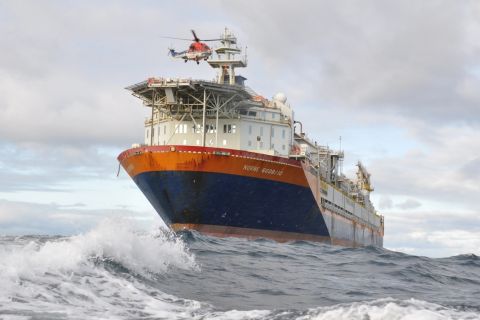Excerpted from the “Seis Matters” blog
In recent weeks, I’ve been pondering what impacts the Macondo blowout might have on the seismic industry. A great deal has been written about the impact on overall E&P activity in the Gulf of Mexico (GoM) and the residual fall-out on the oil service industry, including deepwater drillers, marine support vessel operators, and the like. But I haven’t read all that much in the business or trade press about the potential impacts – good and bad – on the seismic sector. So I thought I’d toss out a few perspectives, and open it up to readers to add their views to the mix. I believe that seismic players with assets in the Gulf – whether those undertaking surveys when the blow-out occurred or those in possession of multiclient data libraries – will take a near-term hit. With Interior Secretary Ken Salazar insistent that the deepwater drilling moratorium not end before Nov. 20, 2010, there is a lot of uncertainty as to how long it might take for the E&P industry to return to prior levels of activity. Regardless of when the moratorium is lifted, it will take several years for the E&P industry to return to prior activity levels in the GoM. As we all know, uncertainty tends to prolong buying decisions. So we likely won’t see any new multiclient programs secure the underwriting needed to get started in the Gulf, and we probably won’t see that much in the way of additional sales of GoM data libraries “on the shelf” to E&P companies that don’t already own licenses to them. So existing GoM seismic projects and data libraries may be somewhat “stranded” for the next several quarters and not transact at the levels we’ve seen over the last 18 months. We may, however, see a significant wave of reprocessing activity as E&P operators try to improve upon legacy multiclient data in order to identify and high-grade potential leasing areas or drilling prospects in anticipation of the moratorium being lifted. Beyond these effects, I actually see a significant amount of upside for our industry. It will be driven by the re-allocation of capital to other geographic regions which, in turn, will drive a need for new seismic data. We’re already seeing an emerging consensus that onshore E&P projects – especially shale gas plays in the US - will emerge as “winners” in the wake of Macondo. This shift will be driven by the perspective that onshore developments are less technologically daunting, and therefore safer, than those happening under a mile or two of ocean. It will also be driven by the perspective that natural gas is cleaner than oil both on a greenhouse gas basis and on the perceived level of environmental damage that would occur from a blowout of a natural gas (vs. oil) well. If this resurgence of unconventional gas plays does occur, we’ll likely see a resurgence in new onshore seismic acquisition over these plays in both the US and Canada. It’s likely that BLM and state-driven mandates will require higher quality seismic over the reservoirs being developed than was perhaps the case in the past, along with mandates that environmentally friendly equipment be used during the acquisition operation itself. So this feels like it will benefit seismic contractors with onshore operations in North America – like Conquest, Dawson, Geokinetics, and Global – along with the technology providers of cableless acquisition systems and the companies that have experience in processing and interpreting data from the uncoventional resource plays. I believe this same resurgence will take place internationally. E&P companies with operations in the GoM will be looking to re-allocate exploration and development capital to other regions in order to sustain their ever-depleting reserve and production base. If you can’t drill in the GoM, you’re going to have to drill somewhere else. We’ve already seen Anadarko, one of the companies with a working interest in Macondo, state that they are going to re-allocate capital internationally. Deepwater rig operators and service companies like Halliburton are re-allocating equipment and personnel in response, and seismic vessel operators are sure to follow. My guess is that the immediate beneficiaries of this re-allocation will be those seismic companies that have modern, on-the-shelf data libraries that E&P companies can use to guide their re-allocation decisions. As a result, demand for international data is likely to increase, whether that data is basin-scale and helps an E&P operator determine whether (for example) West Africa is more attractive than Indonesia, or the data is more localized and helps an E&P operator identify where to drill a well on an overseas lease that is already held (using capital that would have previously been used to drill a well in the GoM). As the year wears on, I think we may see a ramp-up in data library licensing. First, we’ll see capital “freed up” from drilling programs (or new lease sales) in the GoM that can no longer proceed. This capital may be readily deployed to other regions but, in many cases, the E&P operators are going to need more information (over and above what they already possess) before they feel comfortable making an overseas leasing or drilling decision. I wouldn’t be surprised to see the freed-up capital move into seismic data library licensing later in 2010, in support of additional leasing and drilling activity in 2011 and beyond. One can imagine that, in the longer run, the re-allocation of capital beyond the Gulf of Mexico and to international plays will drive a new wave of seismic acquisition, processing, and interpretation, both in proprietary and multiclient formats. Again, that is good news for our industry. In the longer run, it is my opinion that deepwater development in the Gulf will recover, albeit with a much higher operating cost base and increased levels of government scrutiny. I personally believe that E&P operators will be required to have much more insight about the reservoirs they are drilling into to obtain permits (along with using larger and more redundant blowout preventers, enhancing their oil spill response programs, etc.). From the point of view of our industry, more insight into the “reservoir targets to be drilled” likely involves a shift towards proprietary, reservoir-targeted seismic programs acquired and imaged with the most modern technologies (e.g., complex multivessel geometries, streamer steering, reverse time migration processing, seabed or node-based acquisition where possible) and a corresponding shift away from large, multiclient 3-D programs that aren’t designed to illuminate a specific reservoir target or play. This will eventually restore seismic activity levels in the Gulf at least to prior levels, and perhaps beyond, as E&P operators need to satisfy government-mandated reporting requirements on what they are planning to drill before they spud the well. But government reporting won’t be the only driver of proprietary, reservoir-focused imaging programs. As the regulation-driven costs of offshore exploration and development go up, the average cost of the “typical well” will go up also. Before Macondo, an offshore well in the Gulf of Mexico might have cost US $100 million. What will it cost to drill now? Whatever the increase might be, the economics of each well will become more marginal. There will be an even greater premium on drilling fewer wells to develop a reservoir, because each incremental well bears a $40 billion “Macondo risk.” And who will stand poised to help the E&P operators figure out where to optimally target their scarce drilling dollars into the sweet spots of the reservoir? The seismic industry. Things certainly look dark at the moment, but I can imagine the dawn of opportunity in the quarters ahead. What do you think the future holds for the seismic industry in a post-Macondo world? For more, visit http://blog.iongeo.com/Recommended Reading
BP and NGC Sign E&P Deal for Offshore Venezuelan Cocuina Field
2024-07-26 - BP and NGC signed a 20-year agreement to develop Venezuela’s Cocuina offshore gas field, part of the Manakin-Cocuina cross border maritime field between Venezuela and Trinidad and Tobago.
E&P Highlights: July 1, 2024
2024-07-01 - Here’s a roundup of the latest E&P headlines, including the Israeli government approving increased gas export at the Leviathan Field and Equinor winning a FEED contract for the all-electric Fram Sør Field.
Vår Selling Norne Assets to DNO
2024-05-08 - In exchange for Vår’s producing assets in the Norwegian Sea, DNO is paying $51 million and transferring to Vår its 22.6% interest in the Ringhorne East unit in the North Sea.
SLB OneSubsea JV to Kickstart North Sea Development
2024-05-07 - SLB OneSubsea, a joint venture including SLB and Subsea7, have been awarded a contract by OKEA that will develop the Bestla Project offshore Norway.
Private Equity Looks for Minerals Exit
2024-07-26 - Private equity firms have become adroit at finding the best mineral and royalties acreage; the trick is to get public markets to pay more attention.





